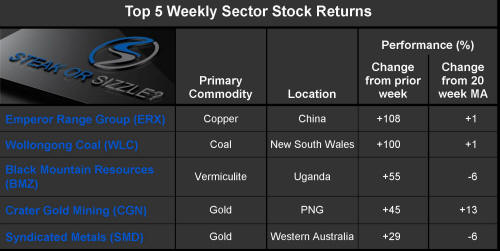The Current View
A lengthy downtrend in sector prices had given way to a relatively stable trajectory after mid 2013 similar to that experienced in the latter part of the 1990s and first few years of the 2000s.
The late 1990s and early 2000s was a period of macroeconomic upheaval during which time sector pricing nonetheless proved relatively stable.
Relative stability suggests a chance for companies genuinely adding value through development success to see their share prices move higher. This was the experience in the late 1990s and early 2000s.
Still vulnerable cyclical conditions were aggravated in the second half of 2015 by a push from investors worldwide to reduce risk. Sector prices were pushed to a new cyclical low. These conditions were largely reversed through the first half of 2016 although sector prices have done little more than revert to mid-2015 levels.
With a median decline in prices of ASX-listed resources companies through the cycle of 89%(and 30% of companies suffering a decline of more then 95%), the majority of stocks remain prone to strong 'bottom of the cycle' leverage in response to even slight improvements in conditions.
Has Anything Changed?
A 1990s scenario remains the closest historical parallel although the strength of the US dollar exchange rate since mid 2014 has added an unusual weight to US dollar prices.
The first signs of cyclical stabilisation in sector equity prices have started to show. This has meant some very strong ‘bottom of the cycle’ gains.
Funding for project development may have passed its most difficult phase at the end of 2015 with signs of deals being done and evidence that capital is available for suitably structured transactions.
Key Outcomes in the Past Week

Market Breadth Statistics

Directional changes in commodity and financial markets have grown in prominence over recent weeks.

Falling U.S. bond yields have been signaling that investors are reluctant to accept the likelihood of stronger GDP growth and higher inflation.
Bond investors are effectively questioning whether the Federal Reserve policy intentions based on expectations of reflation are correct.

The U.S. dollar had been pushing lower but has stabilised recently and begun to show signs of moving higher.
Comments from one Federal Reserve governor during the week suggesting that improved labor market conditions would kindle higher inflation helped the directional change.
Expressions of optimism from U.S. political leaders about the likelihood of tax reform in 2017 contributed to the currency change of direction. So, too, did comments from the governor of the Bank of England downplaying the need for a near-term rise in UK interest rates with the prospect of weak wages growth as the UK prepares to leave the European Union.

Crude oil prices moved sharply lower amid widening conclusions that a market imbalance is likely to persist despite attempts by OPEC to constrain output.
Reflecting the commodity price movement, prices of oil-related equities have also moved lower.

Weakness in commodity prices has extended beyond raw materials and metals. Agricultural commodity prices have also fallen.
The resulting widespread fall in commodity incomes will have a detrimental impact on developing country economies which will adversely affect global growth outcomes. The negative feedback loop will put downward pressure on demand for industrial raw materials.
Recently improved expectations of stronger global growth had relied in part on improved developing economy incomes arising from higher commodity prices. The weakening price profile raises the prospect of those expectations having been premature.

Gold prices fell in the past week although they have remained within a broad uptrend consistent with the rise in bond prices.
Gold prices remain the product of a tug of war between bond prices and the U.S. dollar which, more often than not, are likely to move in opposing directions.

Gold equities have displayed greater short term price volatility than gold bullion prices but the net performance and longer term correlation remain close.
.
The Steak or Sizzle? blog LINK contains additional commentary on the best performed stocks in the sector and the extent to which their investment outcomes are underpinned by a strong enough value proposition to sustain the gains.
